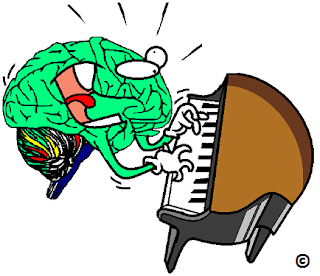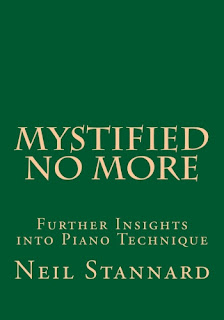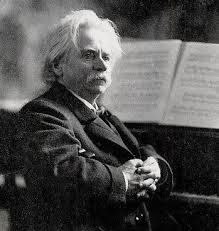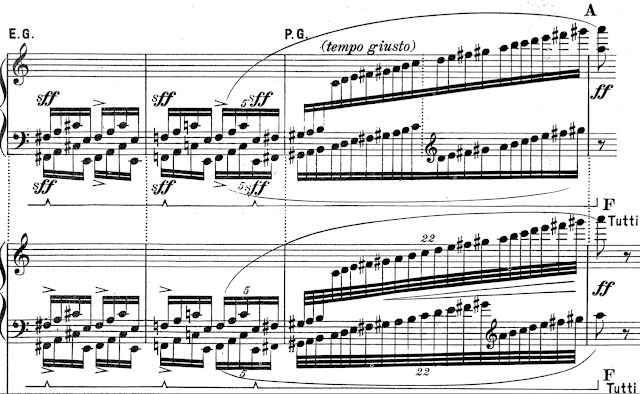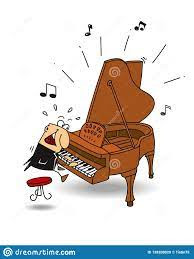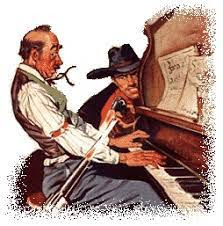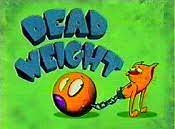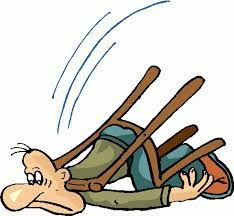Some time ago a pianist wrote to me in defense of using exercises for developing piano technique. It was a response to my contention that most composers of these morsels had in mind to strengthen fingers and somehow create finger independence (and to make money?). He argued that "most exercises are NOT training for strength, but rather they are more NEUROMUSCULAR in nature." And he has a use for exercises. I'm glad he feels that strength training is not a reasonable objective.
 |
| Charles-Louis Hanon 1819-1900 Looking diabolic! |
Unfortunately, the impression most students and teachers take away from collections of exercises does have to do with strength training. The two most ubiquitous composers of etudes, Hanon and Czerny, have created a strength and finger-independence cult.
Hanon was trained as an organist and there is no evidence that he ever received advanced training in music or that music was ever his primary vocation. In the preface to his 60 Exercises, Hanon states that "The fourth and fifth fingers are almost useless for lack of special exercises for these fingers, which are always weaker than the rest." I'm happy to report that he is wrong. There is nothing
wrong with the fourth and fifth fingers unless at some point they've been slammed in a car door. Our job at the keyboard is to learn how to use them according to their design. (Making the fingers feel "strong" is addressed elsewhere in these pages.) Further, he instructs students to "lift the fingers high." This is pointless and possibly dangerous, but again that is a different topic. The fingers are not physiologically independent of one another but can be made to sound that way.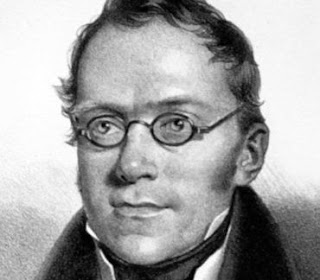 |
| Carl Czerny 1797-1857 (Doesn't he resemble Schubert?) |
But my correspondent's main point of contention, which he argues ever so politely, is that exercises are useful because they are not music. "They are NEUROMUSCULAR in nature." "Technique," he says, "is in the brain, not the body."
The first half of that statement is right on point. Yes, we think first. But we think about what the body needs to learn. This is what I call practicing on purpose, working into an automatic response the appropriate technical solutions which we first have to conceive of. Everything we play is, of course, neuromuscular. We rely on physical conditioning, particularly in speed. He points out that students have "too many distractions" in a piece of music: "reading, tone productions, balance, phrasing, tempo." If he really wants to play unmusically (I'm sure he doesn't), he can do that in passages in a piece of music just as well as in an exercise.And this is really what I'm talking about. When I say ignore exercises in favor of music, I mean select challenging passages in the music to use as etudes. This might be a scale passage, an arpeggio, two measures of double notes or an octave group. In so doing, we have a head start on a piece we really want to play. If you master Hanon, you have, well, an exercise that trained your hands to play that exercise. This will not necessarily transfer to a piece of music.

When I was in graduate school, I overheard one of my very accomplished colleagues practicing scales and Hanon, which were perfect in every way. She had just performed a heavenly Beethoven fourth concerto. I asked her why she spent so much
time on that fruitless exercise. Her reply? She blushed and responded: "I enjoy it." Well, for me that is a way of postponing the next challenge. But I can hear my teacher now: "Dear, you can play whatever you want as long as you play it correctly." Of course, if you know how to play your exercise correctly, then you don't need to play it at all—unless you enjoy it. It's probably better than other delay tactics such as checking email or starting the laundry. |
| The Pianists Guide to Practical Technique |
 |
| The Pianists Guide to Practical Scales and Arpeggios |

